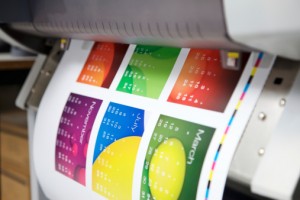Tricking your brain: How does photo-quality printing work?
 Â Photo-quality printing, otherwise known as high-definition reproduction, creates ultra-high resolution prints of intricate graphic design work. As digital media gets more sophisticated, printing processes need to keep up so that large-scale posters can be just as impressive, if not more so!
 Photo-quality printing, otherwise known as high-definition reproduction, creates ultra-high resolution prints of intricate graphic design work. As digital media gets more sophisticated, printing processes need to keep up so that large-scale posters can be just as impressive, if not more so!
To start with, the print must come from an image with double the normal resolution for print images – 2400dpi (dots per inch) rather than 1200dpi – which means the original picture contains as much colour detail as possible for the printer to read. The printer takes the image and turns it into a CMYK file – this means Cyan, Magenta, Yellow and Black, the colours used to make the print. The actual print is comprised of small dots of just these four colours, printed separately to keep the ink from blending. The dots are placed so close together that your brain thinks it’s seeing a whole spectrum of hues, creating an amazing print quality – the dots are only visible using a micrometer!
The process is relatively inexpensive compared to older ways of printing, and much easier for bulk-printing. Most importantly it creates magazine-quality prints for beautiful, glossy promotional materials.






